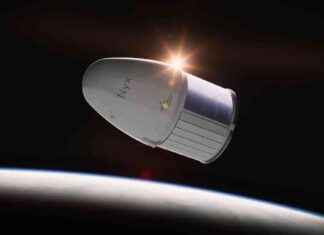Donald Trump does overheat the oil markets. The us president announced the end of the waivers granted to eight countries buyers of iranian crude (China, India, Turkey, Japan, South Korea, Taiwan, Italy and Greece) on 2 may next. A decision which aims at a clear objective: reduce to zero the export of oil from Iran to further economic pressure on the country. The news immediately pushed the price of crude oil. After completing Monday to their highest level in five months, they continue to rise this Tuesday. To 16 hours, a barrel of Brent was 74,29 dollars in London, up 25 cents compared to the closing of Monday. And this, after peaking at 74,70 dollars in the morning. The barrel of WTI earned him 62 cents to 66,17 dollars, for a few moments after reaching its highest in nearly six months, 66,31 dollars.
investors fear that the supply of crude oil will dry up. A member of Opec, Iran is in fact one of the main producers of oil in the world. Production of Tehran has reached, according to the latest report of the cartel oil, 3.5 million barrels in 2018. Its exports, of the order of 1.7 million barrels per day last month, according to the agency S&P Global Platts, are mainly shipped to China (628.000 barrels) and India (357.000), two countries that are no longer able to provide to Iran next month under penalty of sanctions.
The waivers which had been granted in November, at the time of the entry into force of the second round of u.s. sanctions, had at the time been interpreted as the will of Donald Trump as not to cause sudden increase of course. In the aftermath, the price of oil had continued to decline started at the beginning of the fall up to fall to around $ 50 a barrel. To halt this fall, the Opec and its allies, led by Russia, had agreed in December to tighten the valves. The manoeuvre, coupled with the decline of the production of Venezuela and Libya, had been successful as a barrel of Brent has gained nearly 40% since January 1, and WTI-about 45%. It is in this context already bullish are the new announcements of Donald Trump on Iran.
Threats on the strait of Hormuz
The us president, who does not want to see oil prices skyrocket over the term, has promised to do everything to compensate for the shortfall that would cause the withdrawal of iranian oil. The United States will be part of the solution, promises the White House in its press release. Driven by shale, us production of crude oil breaks records, around 12 million barrels per day. In November, for the first time in decades, the country even became a net exporter of petroleum products. It should export more than Russia in 2023. In addition to the United States, Donald Trump intends to put pressure on the other two heavy weights of the sector: the united arab Emirates and Saudi Arabia. Riyadh has said it is prepared to “stabilize” the market, without giving further details. Iraq stands ready to act by exporting to 250,000 barrels extra per day, said a government official.
For its part, Iran has denounced a decision by the united states “unlawful” and again brandished the threat of blocking the strait of Hormuz. What accentuated the volatility of markets. A large part of the global crude passes through this narrow stretch of 63 kilometers in width located at the end of the waters of the Persian Gulf, between Iran to the north, and Oman and the united arab Emirates to the south. “According to international law, the strait of Hormuz is a sea passage and if we can’t use it, we will close,” said the general Alireza Tangsiri, which also promises to defend “without a shadow of hesitation,” the waters in iran in case of american intervention.
” SEE ALSO – Fuels: how is the price of a litre of diesel?
Fuels : how is the price of a litre of diesel ? – Look on Figaro Live







